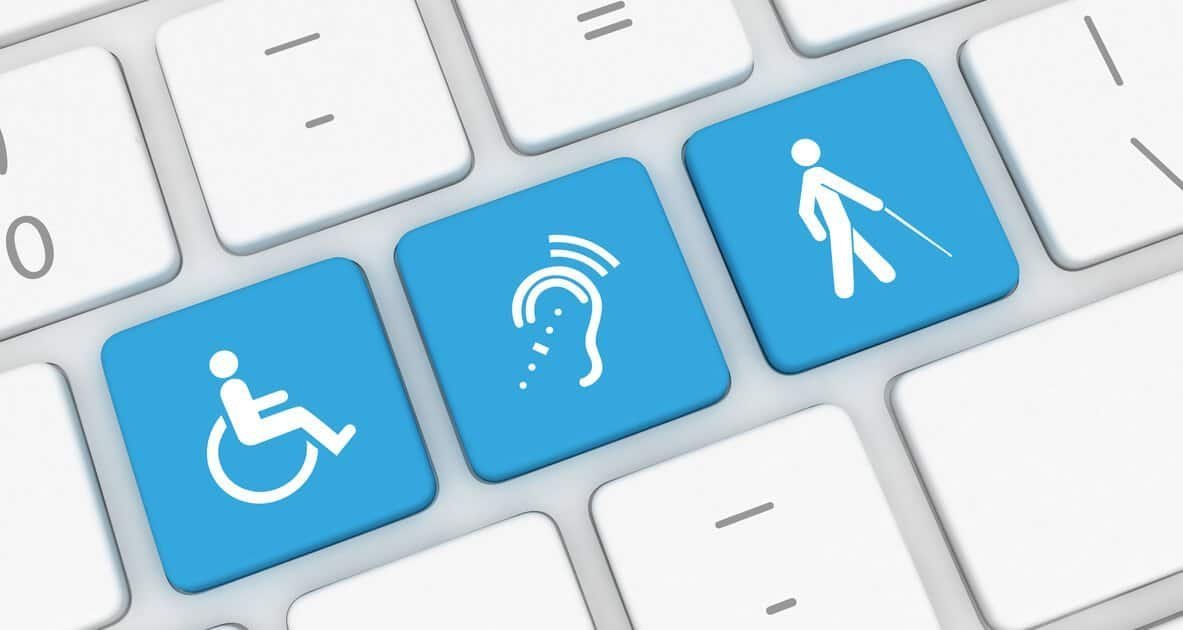
Many web developers, graphic designers and others in the technology and media industries will most certainly come across a project which will need to comply with “Section 508” or other website accessibility standards. This term can be an intimidating option for a beginner as it involves a lot of legal implications. While Section 508 is constitutionally binding only for the United States federal agencies and for the ones who are funded federally, often an organization that provides public services might request a website or software that needs to meet the requirements for Section 508.
Approximately 20% of all Americans have some form of physical limitation; of them, about half of those are contemplated to be severe disabilities. By ignoring the accessibility demands of your audience, any business will inevitably lower the page views, lower (if not isolate) the target audience and eventually limit the website statistics.
Whether working for the federal government, a private division, or a nonprofit section, 508 compliance and accessibility best practices are for all users, which should be met well before the design or development of the website is executed.
What is Section 508?
Section 508 is an amendment to the United States Workforce Rehabilitation Act of 1973 which was further amended in 2001. It is a federal law that mandates all electronic and information technology developed, procured, maintained, or being used by the federal government should be accessible to people with disabilities. 508 Compliance, hence, involves developing a website that people with restricted vision or blindness, deafness, seizure disorders, and other kinds of physical disabilities can use.
Along with the revisions to the Federal Acquisitions Regulations (FAR), the Electronic and Information Technology (EIT) Accessibility Standards were also published. With the law in place, federal employees with disabilities or any members of the public sector using national information and technology will now have the same access as others to any website.
Who Needs to Fulfil 508 Compliance?
All organizations and businesses should try to make it a preference to pursue 508 compliance for their official website.
Not only does a 508-compliant website make any business accessible to more leads with potential customers with disabilities, but failing to fulfil the same might result in a costly lawsuit for a company.
Depending on the current website condition, you have to decide what you need to do to satisfy 508 compliance. While some websites may only need only a few changes to be appropriately accessible, many others are likely to require a complete website redesign.
Updates of Section 508 Accessibility Standard
The accessibility requirement for ICT, mentioned in Section 508 of the Rehabilitation Act 1973, was amended, and the absolute rule was given in January 2017 by the US Access Board. Section 508 Accessibility Standard now has the following objectives:
- Improving the accessibility of information technology for people with various disabilities
- Keeping up with the continually changing technology and modernization of the gadgets
- To ensure that the requirements in the standards are more accessible to follow and understand for everyone
- To ensure that the conditions conform to what is required by other international standards
Section 508 Has Three Main Elements to Meet:
- Technical – these conditions make sure that the coding of software, website, operating systems, and others are compatible with the assistive technologies.
- Functional – these elements ensure that apart from the extension to the technical coding, the entire system is ready for someone with a disability.
- Support – these requirements ensure that support documents and alternative information are equally accessible by people with physical disabilities.
Every information and communication technology (ICT), which involves a website, digital document, web app, agency, or even contractor, is expected to completely comply with the updated Section 508 Standards from January 18th, 2018. Here are some of the significant changes in the Section 508 revised standard:
Understanding the Functionality
As per the revised rule, products should be organized per their feature rather than their type to keep up with technological progress. If your application or website is inaccessible due to the use of software or technology which is not recognized under Section 508 Standard, or if it is difficult because the technical compliance fails to translate it to a suitable user experience, the website is required to review the Functional Performance Criteria to understand Section 508 compliance. Functional Performance Criteria commands that you grant options that can inscribe the type(s) of disability that is unable to access your ICT.
Adoption of WCAG AA 2.0
The new Section 508 update has compliances against WCAG 2.0 AA, and it is the same standard that is used around globally. Similar to Section 508, WCAG 2.0 AA does not give particular tasks which the webmasters must meet to make a website accessible and compliant. Instead, the guidelines describe what available sites must do, with a focus on functionality rather than form. This gives webmasters the capability to execute a solution that works best for their needs.
Section 255, Telecommunication Act
Section 255 is the standard that controls the telecommunication service providers along with the equipment manufacturers. This standard was updated to take into account the current improvements in telecommunication technologies, particularly mobile and smartphone technologies. This rule now also regulates the software and apps which are integrated into handheld mobile devices. Section 508 Accessibility Standard expects all telecommunication devices to comply with Section 255.
Expanded Marketplace
The revised standard incorporates all the related international standards, including WCAG 2.0 (Web Contents Accessibility Guidelines) and EN 301 549 (European Commission ICT Standards). They are used to create web standards, and clarify the suitability of websites, software, and electronic documents, and facilitate the creation of a broader marketplace for easy technological solutions worldwide.
We are Here to Help You
Your clients who would require 508 compliance in their websites, documents, or software will need you to have proficiency and experience in complying with 508 guidelines. So, if you expect to list Section 508 as one of your skills, you might consider getting in touch with the experts who will help you to adhere to those accessibility standards.
After going through this article, are you trying to reach a thoughtful conclusion? Accessibility of websites for all users, including those with any form of physical disability, is crucial regardless of the content of the site. Would you like to get further information on ways to make your website accessible? Are you excited to know the performance of your website when tested on accessibility standards? Are you looking for expert web accessibility services in India?
The Ananyoo Team can help you to estimate the performance of your website against WCAG 2.0 through a free scan that will deliver a detailed report about the findings. Our experts offer a free 30-minute consultation which can be further utilized to take care of the concerns of your website accessibility. Visit our website to get in touch with our experts!
